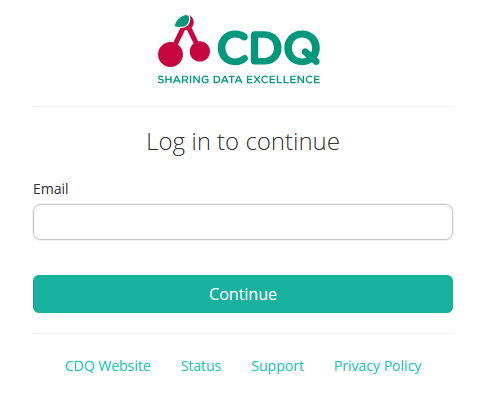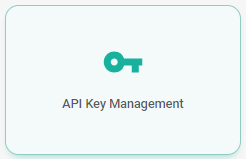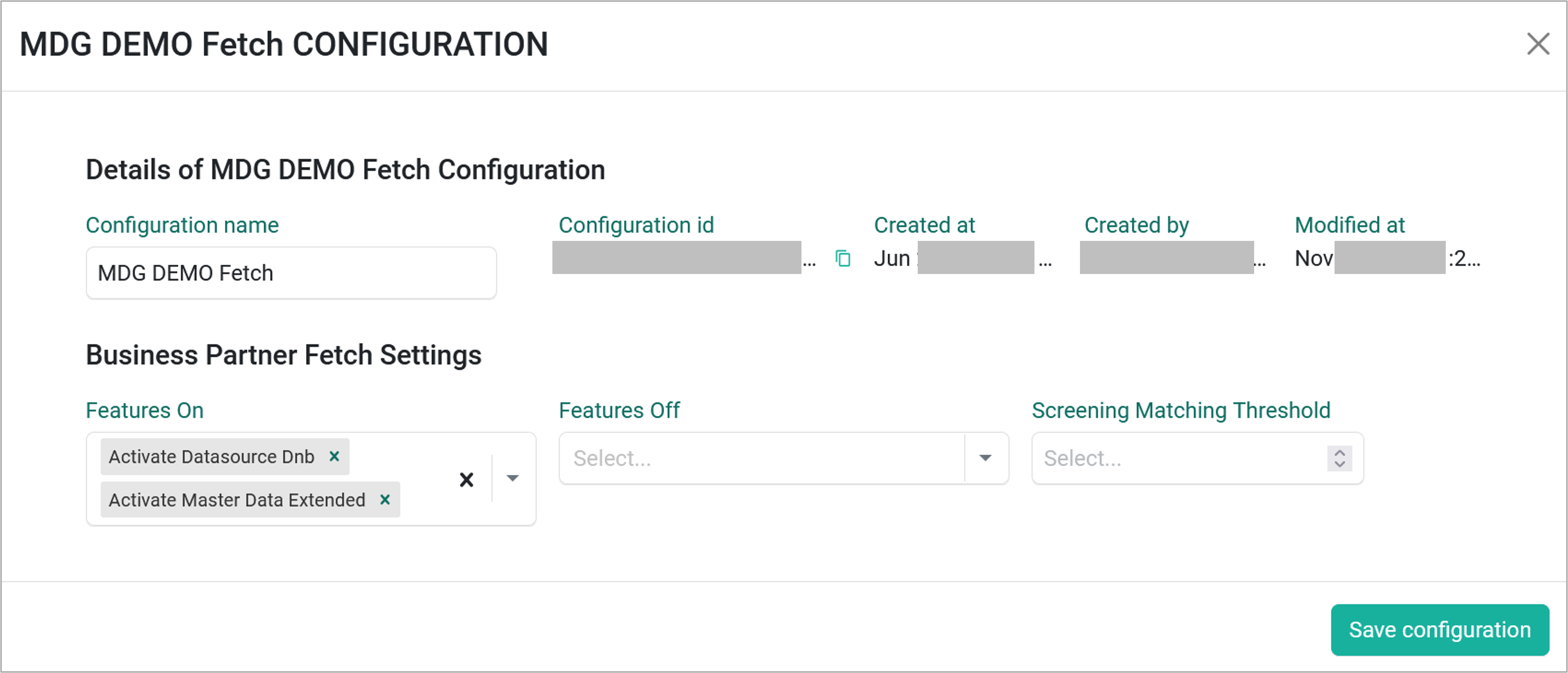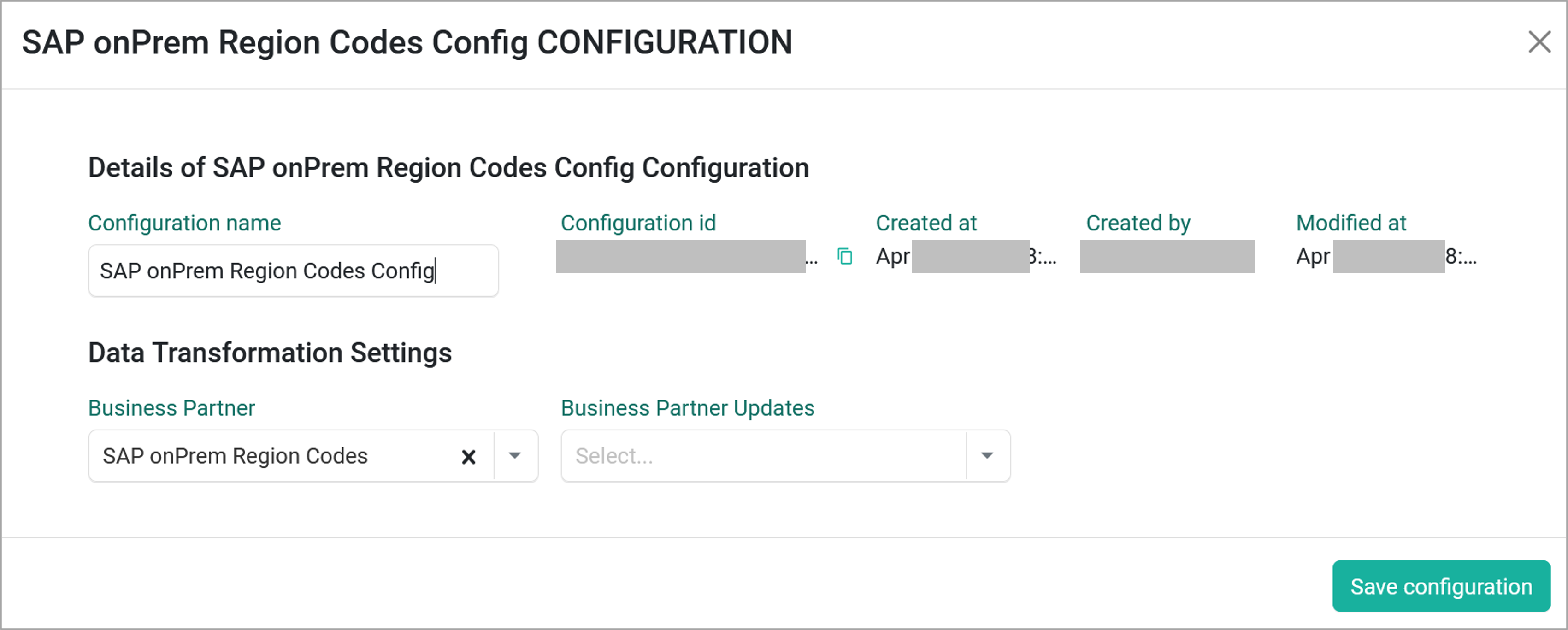Bulk matching and enrichment is a process that allows you to match a large number of Business Partners against the CDQ database. This process is useful when you have a large dataset of Business Partners that need to be matched and enriched.
Learning Goals
In this tutorial, you will learn how to:
- Prepare input data using standard SAP Business Partner objects.
- Perform bulk lookup to match Business Partners against the CDQ database.
- Review the candidate list and select the best candidates for further processing.
- Download and enrich matched records.
- Load data into the target environment.
Check your CDQ apps account.
- Log into the CDQ Cloud Apps
 |
No account?
- If your organization is already a CDQ customer, ask your internal point of contact to create a CDQ dedicated account or request account. Account detail will be sent by email.
- If your organization is not yet a CDQ customer, please contact us to get started.
To create new API Key navigate to the API Key Management APP:
- Open the API Key Management APP.

- Click on the
Create New API Keybutton. - Fill the API Key name and click on the
Create Api Keybutton.
For details on how to create and set an API key see these instructions: Authentication
Ensure that created API Key has appropriate access rights for both lookup and fetch operations. This key will be used for communication between the CDQ services and SAP MDG. It needs to be configured in the communication arrangement inside SAP.
The Lookup Configuration specifies how the data will be matched against the CDQ database. To create a Lookup Configuration, follow these steps:
- Go to the Business Partner Lookup Configurator app.
- Click on the Create Augmentation Configuration button.
- Fill in the configuration name and click Create button.
- Search the newly created configuration and click the See details button.
- In the details of the configuration, set required parameters:
- Data Sources settings tab:
- Select the Data Sources.
- Lookup settings tab:
- Set the
Matching Threshold. - Set the
Max candidates vol.(3–5 recommended). - Set the
Features ON(for example,GOLDENRECORD_INLINE).
- Set the
- Data Sources settings tab:

You can configure various settings, such as data sources to be included and feature toggles.
| Parameter | Description |
|---|---|
GOLDENRECORD_INLINE | Ensures that the Golden Record is included in the search results, making it easier to identify and utilize the combined data directly. If enabled, the Golden Record will always appear at the top of the search list. |
GOLDENRECORD_INLINE_SORTED | Arranges the Golden Record based on its matching score, positioning it within the search list according to its relevance compared to other records. If enabled, the Golden Record may not always appear at the top, but will be sorted based on its score. |
| Parameter | Description |
|---|---|
SHOW_GOLDENRECORD_STANDARD | Enables the creation of a Golden Record in the lookup results. If not enabled, only the results from the configured data sources will be shown. |
Fetch Configuration specifies how the data will be fetched from the CDQ database. To create a Fetch Configuration, follow these steps:
- Go to the Business Partner Fetch Configurator app.
- Click on the Create new configuration button.
- Fill in the configuration name and click Create button.
- Search the newly created configuration and click on the See details button.
- In the details of the configuration, set required parameters:
- Set the
Use Fetch Strategy Golden Recordin the Features On field (highly recomended).
- Set the

More than one feature can be set. Ensure that the settings align with the data sourcing strategy, whether using CDQ-IDs or other identifiers.
Data Transformation Configuration specifies how the data will be transformed before being passed to the SAP MDG. To create a Data Transformation Configuration, follow these steps:
- Go to the Data Transformation Configuration app.
- Click on the Create new configuration button.
- Fill in the configuration name and click Create button.
- Search the newly created configuration and click on the See details button.
- In the details of the configuration, set required parameters:
- Set the required value in the Business Partner field.
- Set the required value in the Business Partner Updates field.

Be sure the transformation rules align with the data structure requirements of the target system.
To finalize the configuration process, all lookup, fetch, and data transformation configurations must be attached to an API key. To attach configurations to an API key, follow these steps:
In the "API Key Management" section, select the API key that you created earlier and click on "See Details" to edit the settings. Attach the configurations you created to this API key.
- Go to the API Key Management app.
- Click on the See Details button of the API key you created earlier.
- In the details of the API key, assign previously created configurations. Assign new configuration in :
- Augmentation Configuration
- Fetch Configuration
- Data Transformation Configuration
- Click on the Save changes button.
Ensure that created API Key has appropriate access rights for both lookup and fetch operations. This key will be used for communication between the CDQ services and SAP MDG. It needs to be configured in the communication arrangement inside SAP.

This setup enables efficient and accurate matching, fetching, and transformation of Business Partner Master Data using CDQ Cloud Apps in connection with SAP MDG or SAP MDG Cloud Edition
We are constantly working on providing an outstanding user experience with our products. Please share your opinion about this tutorial!